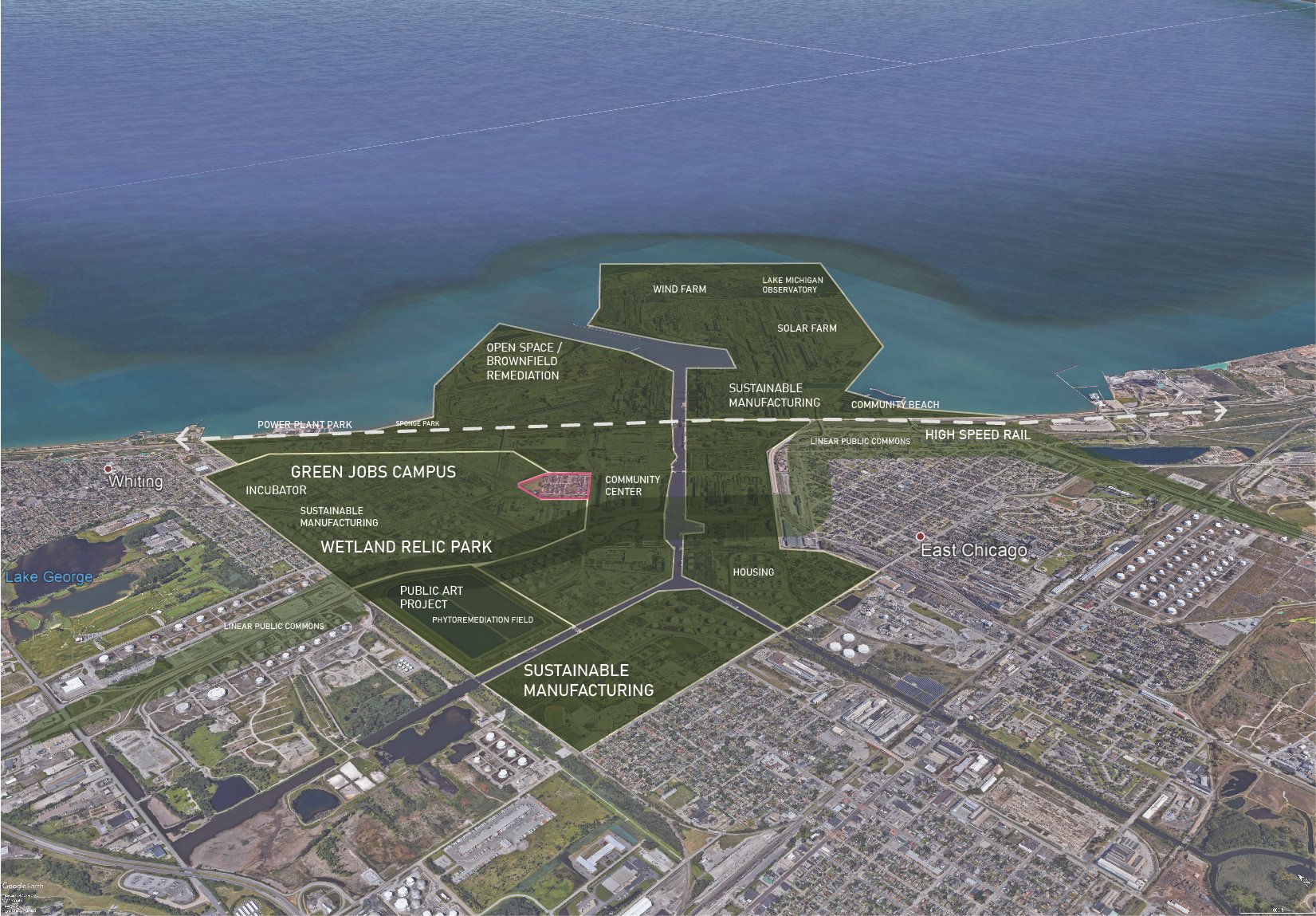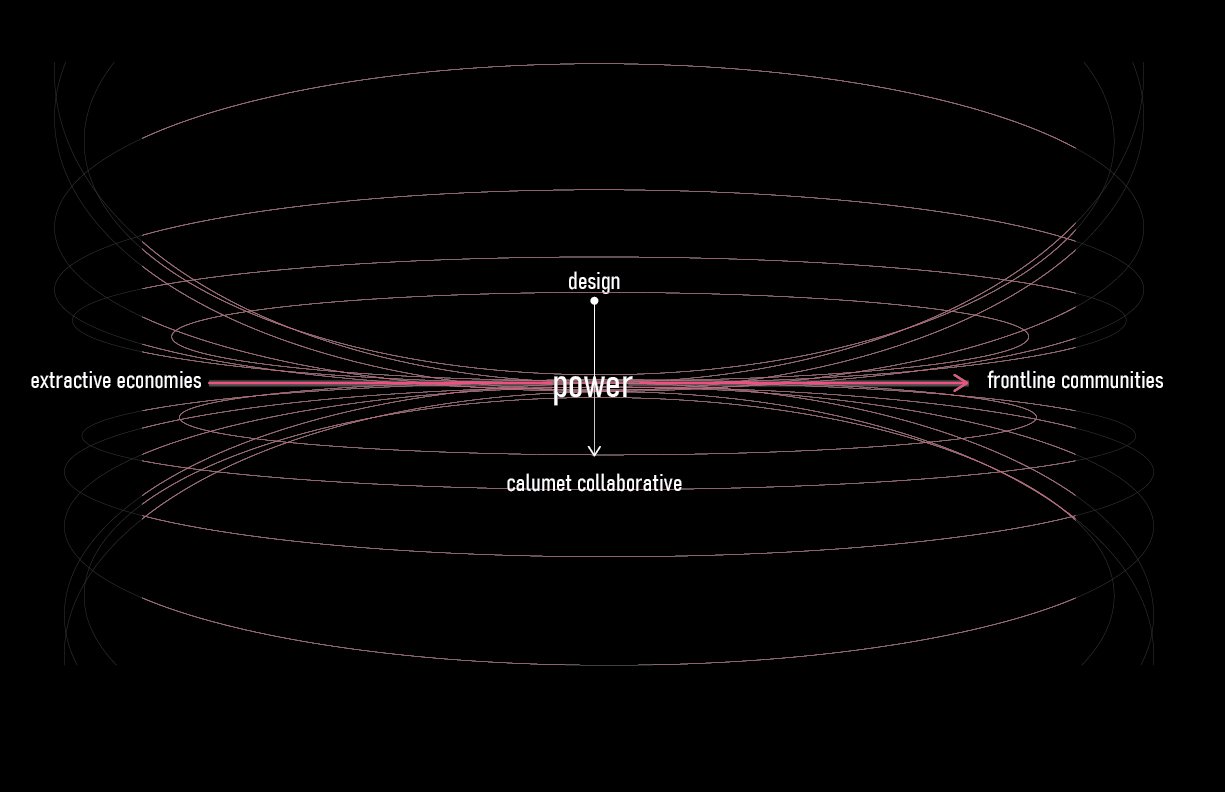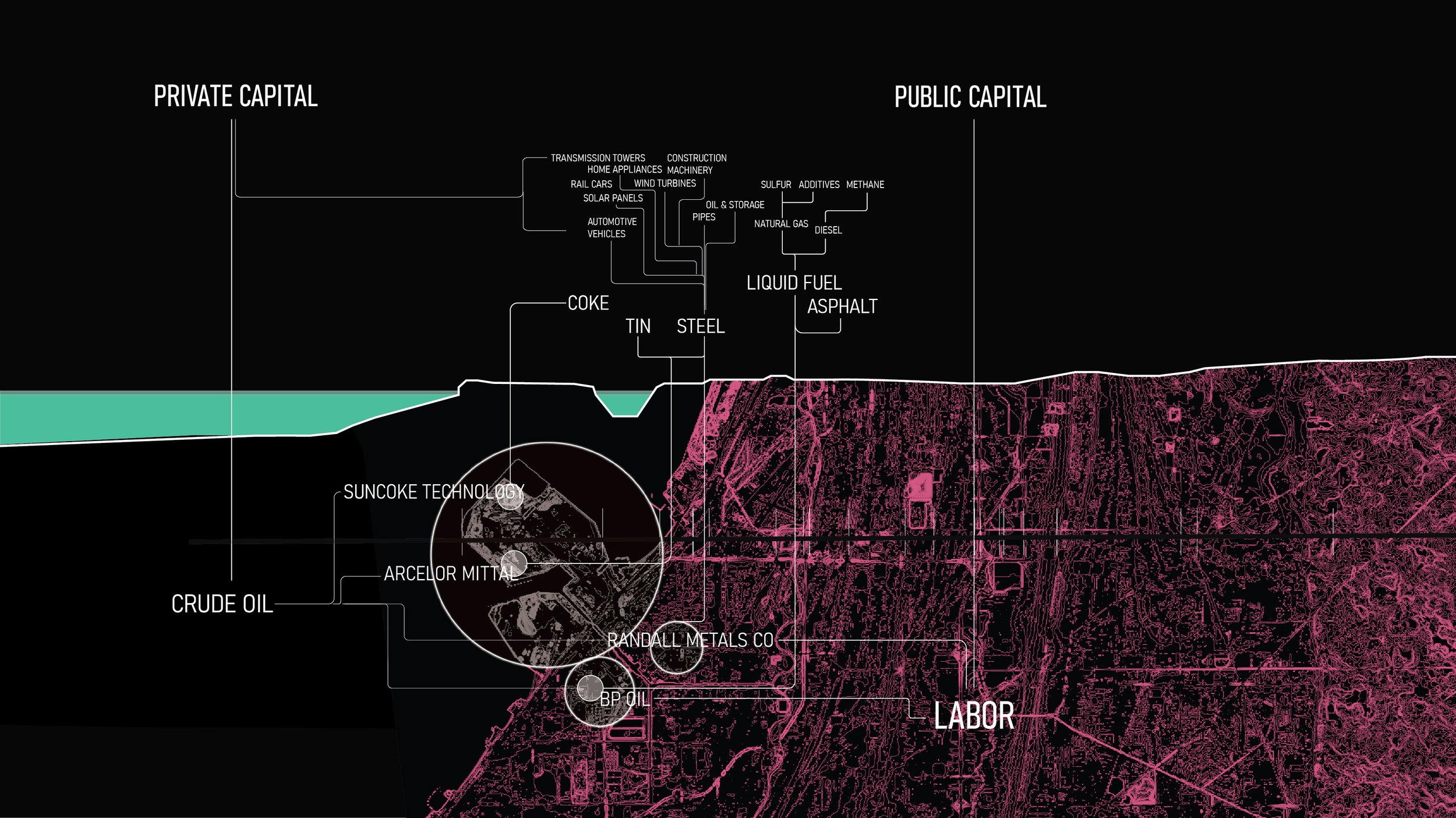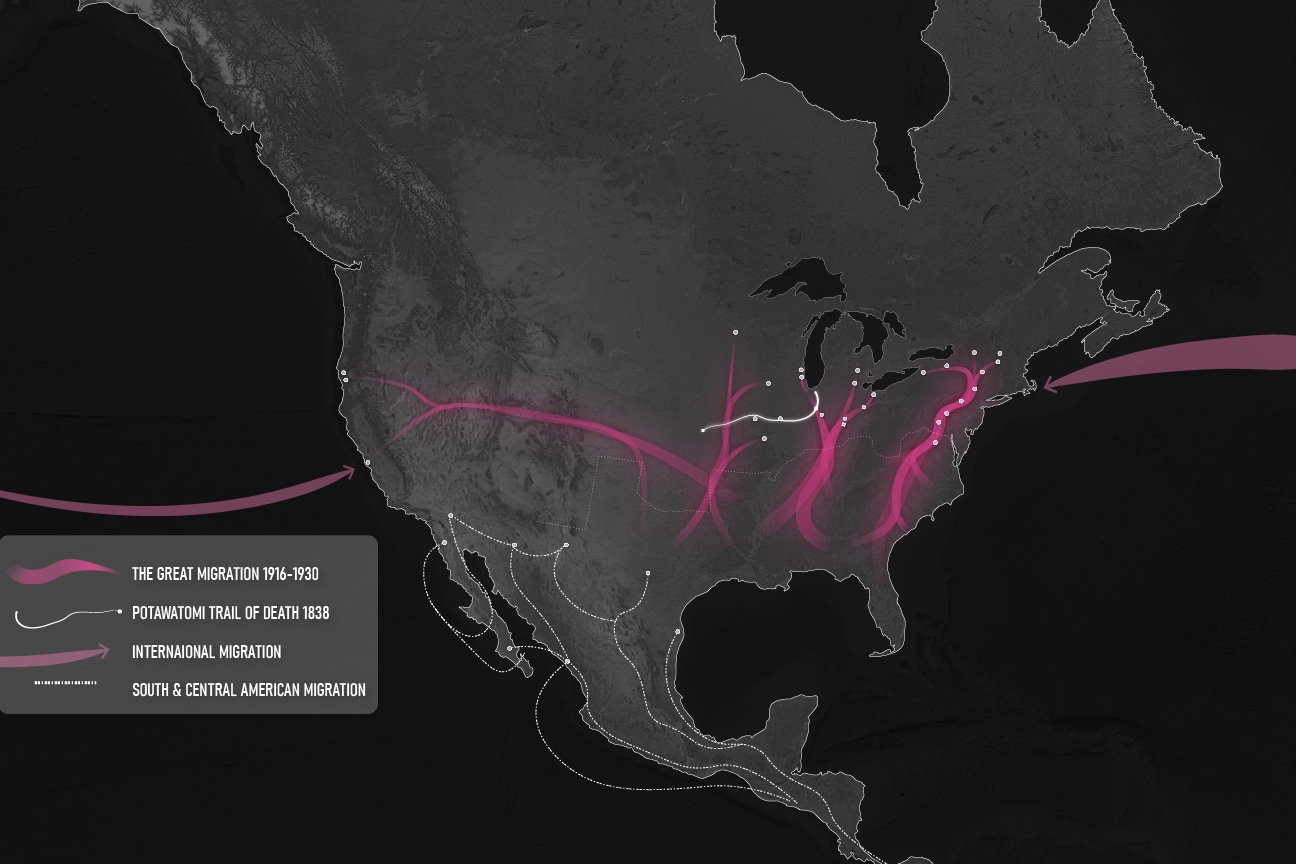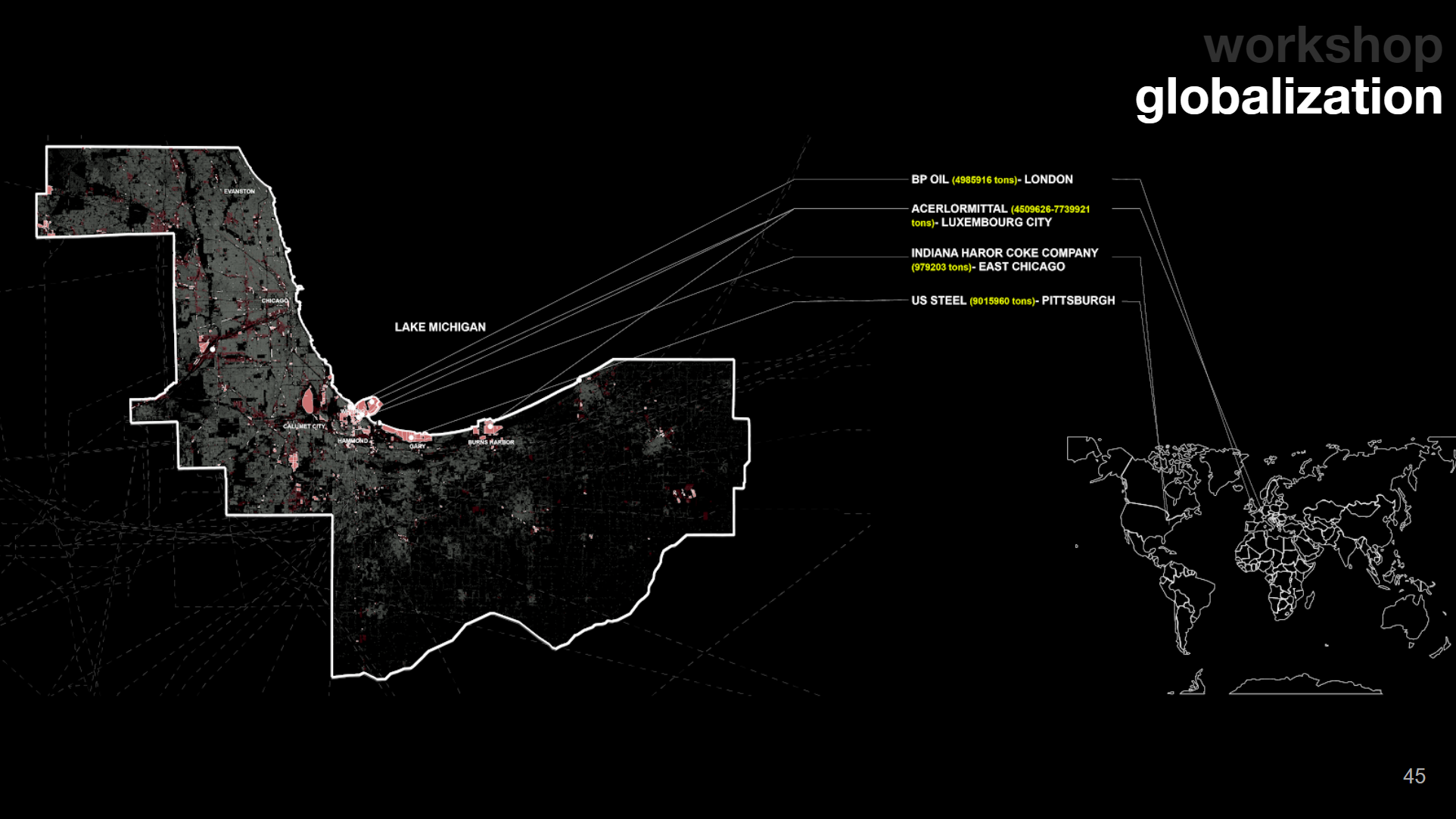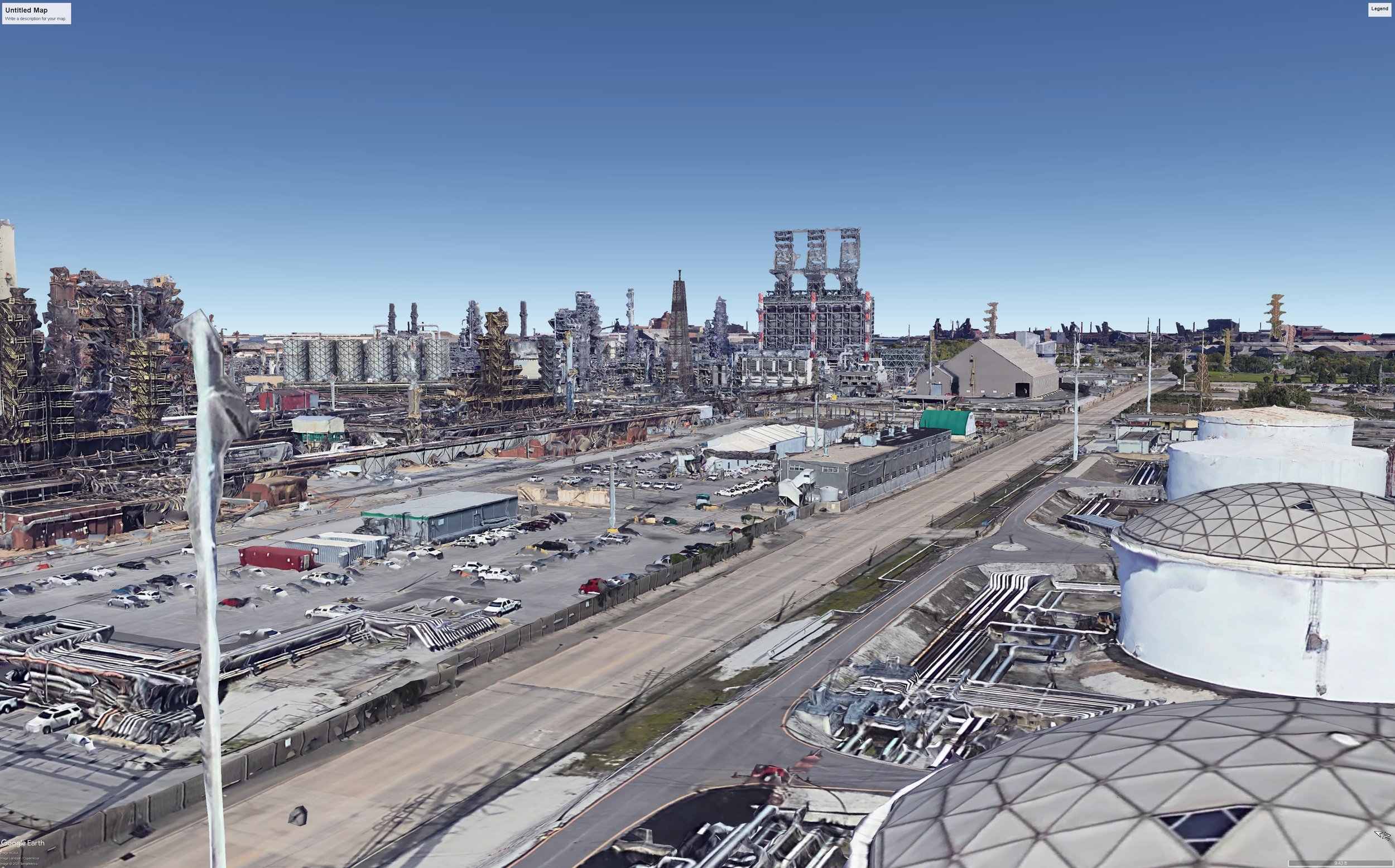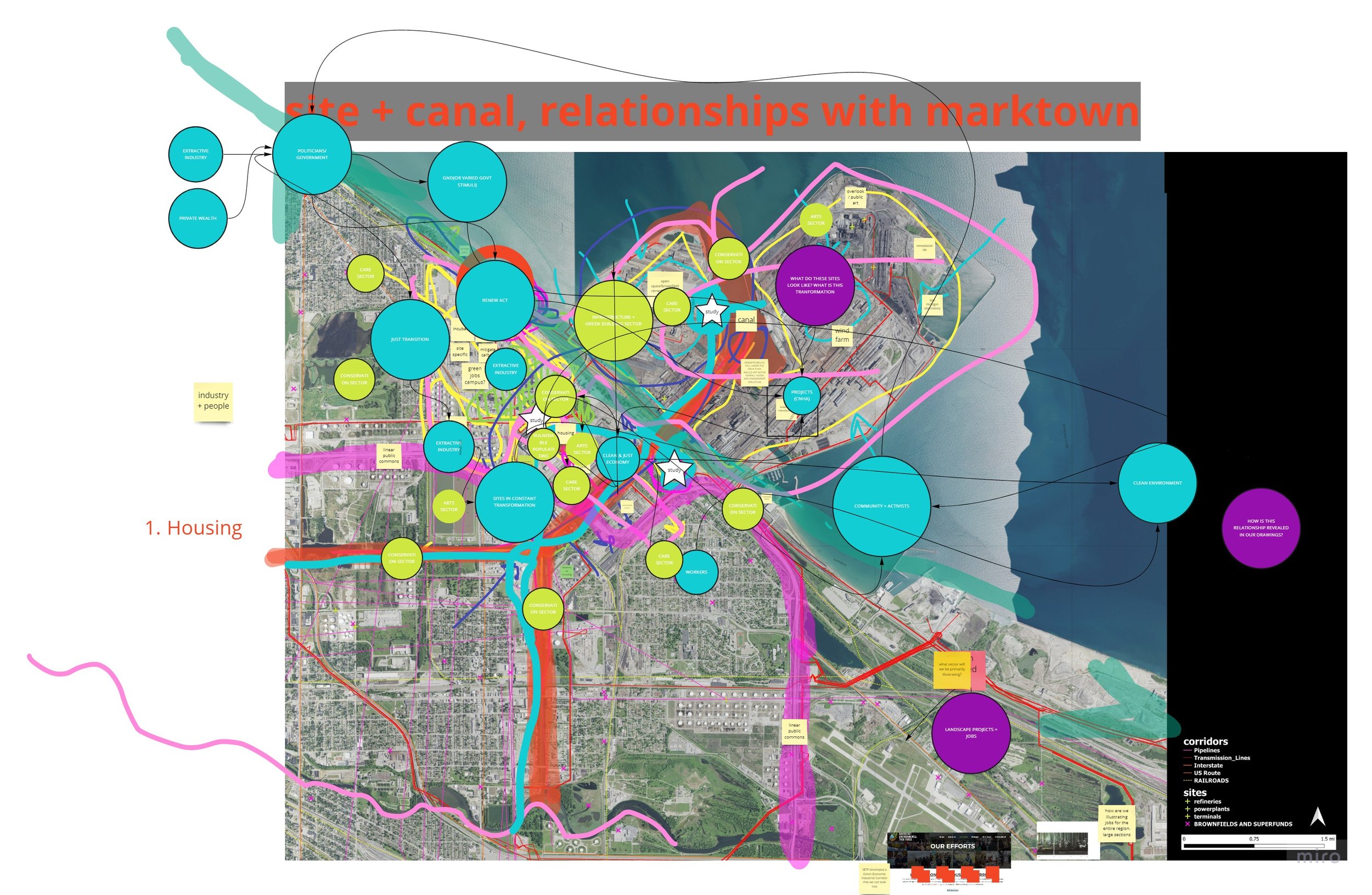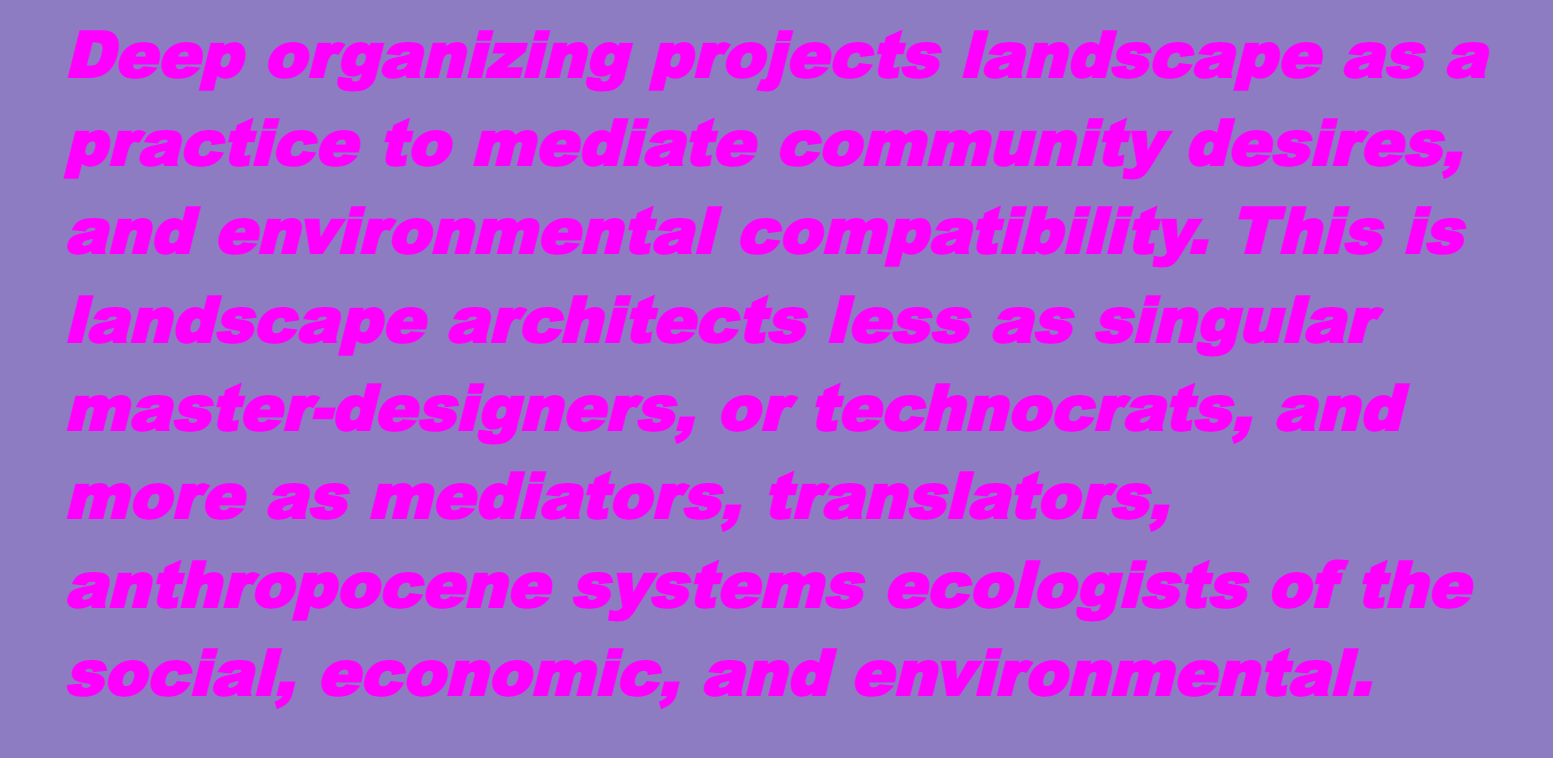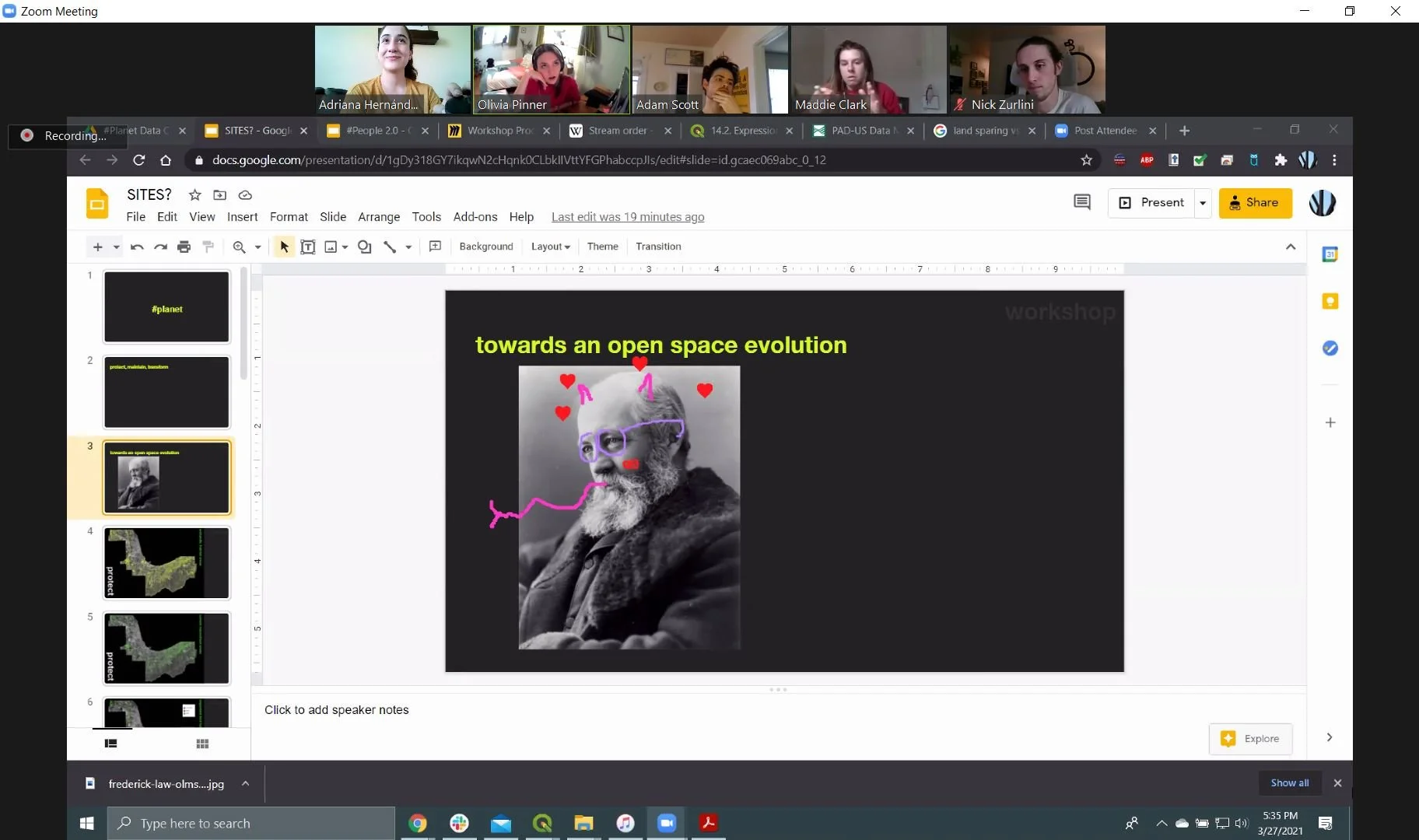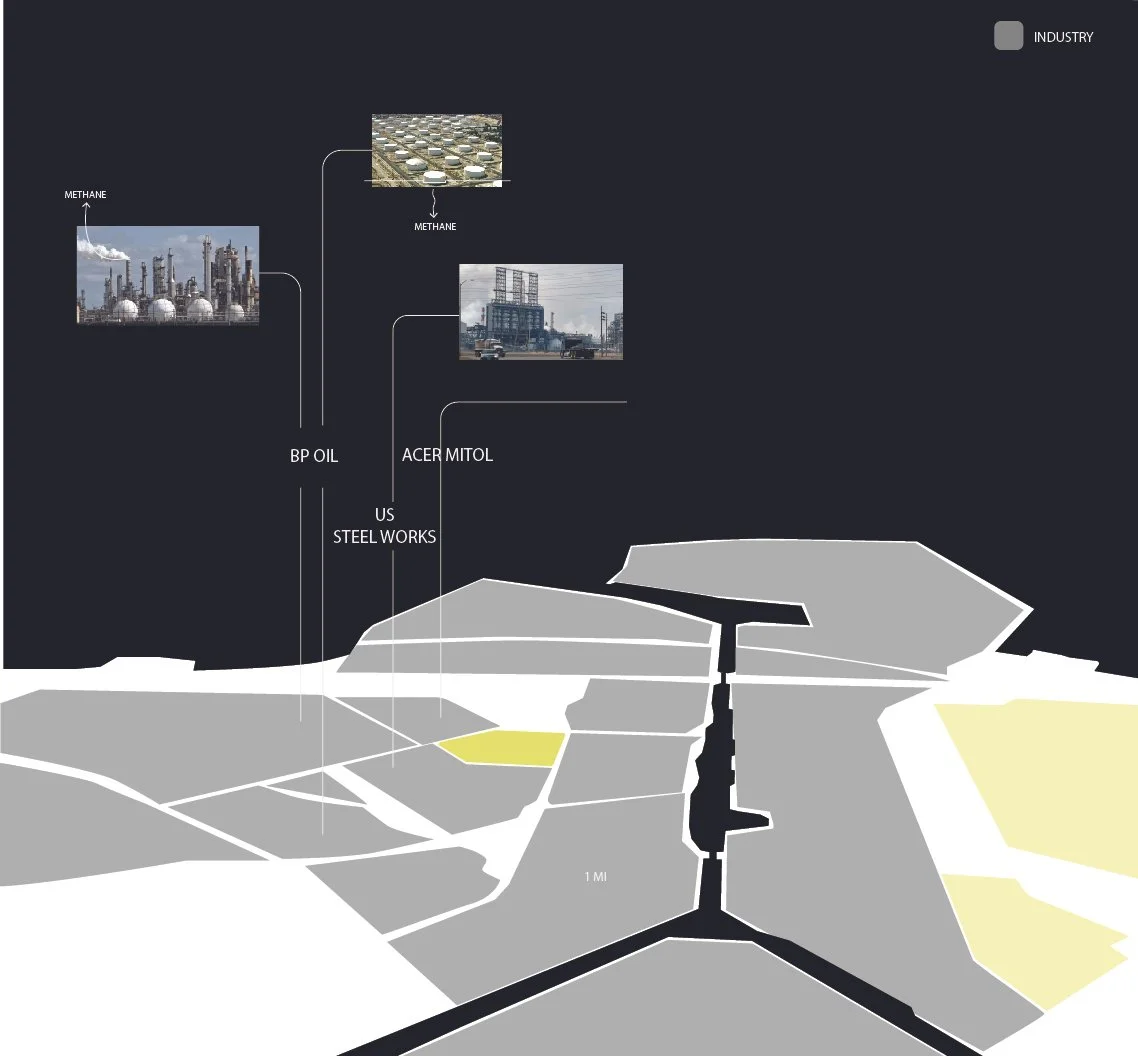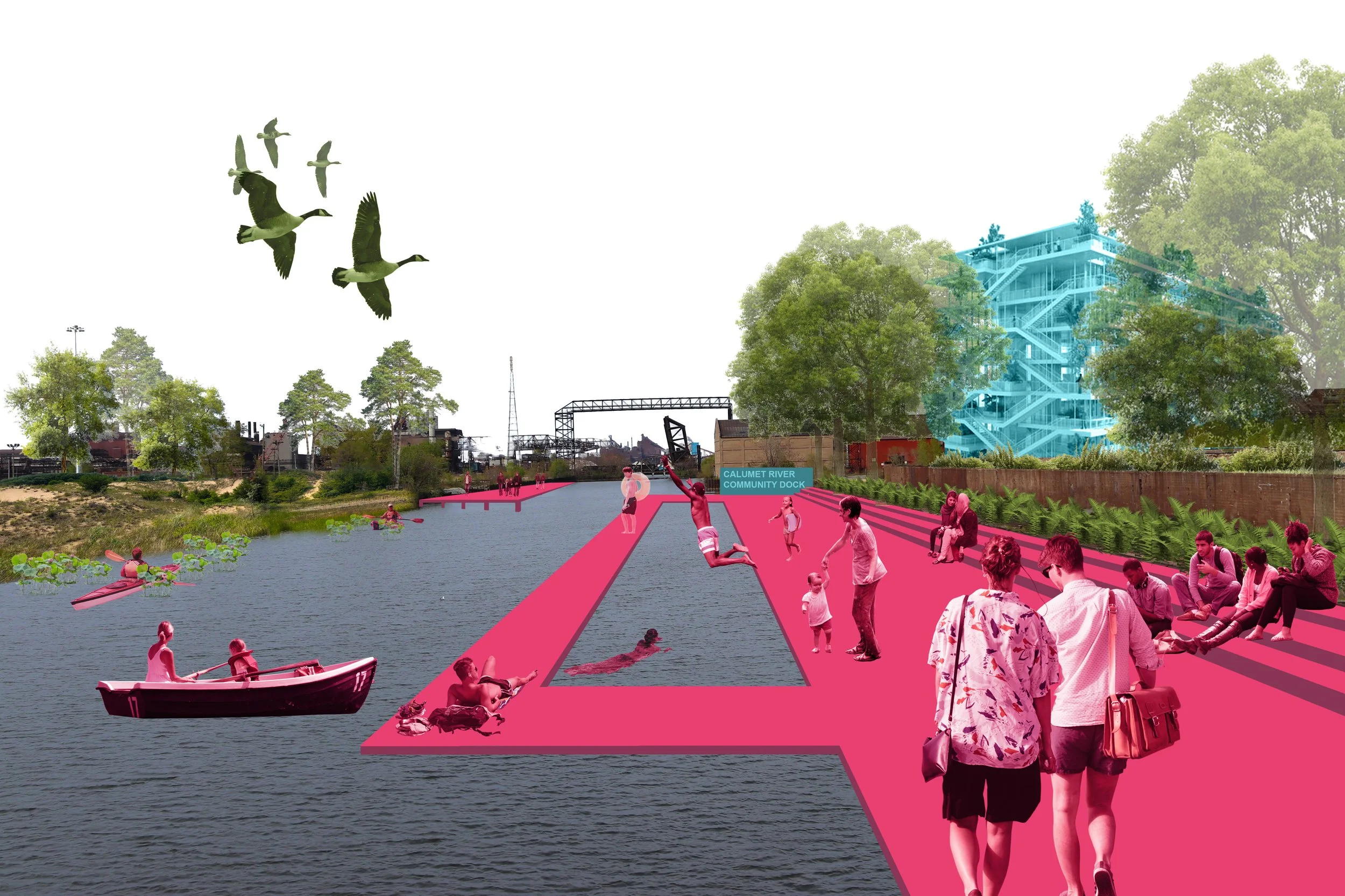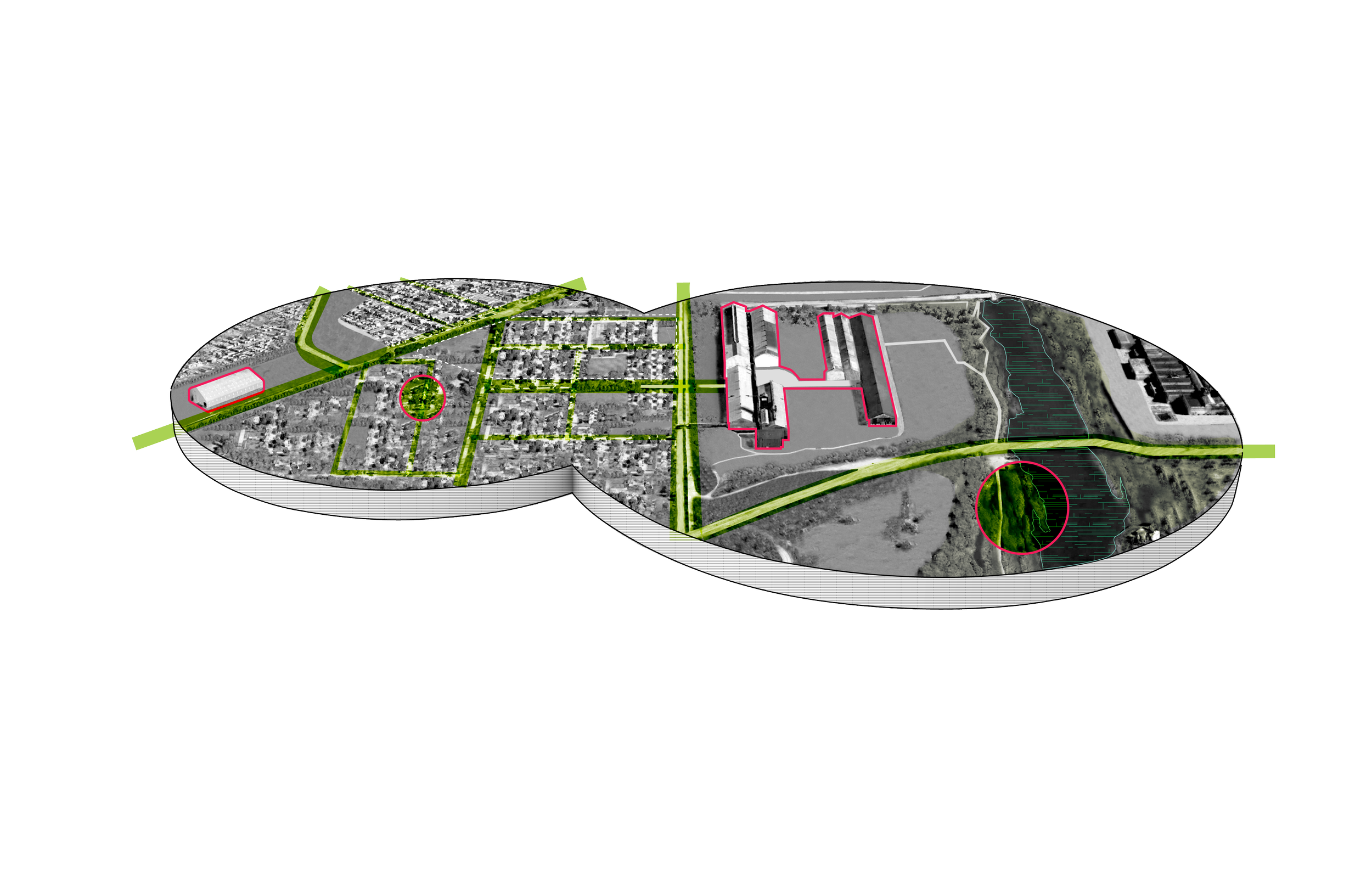The Green New Deal Superstudio ran from August 1, 2020 until June 30, 2021. The Landscape Architecture Foundation (LAF) in association with the Weitzman School of Design McHarg Center, the Center for Resilient Cities and Landscapes, the American Society of Landscape Architects (ASLA), and the Council of Educators in Landscape Architecture (CELA) invited designers to be part of a historic, national initiative to translate the core goals of the Green New Deal—decarbonization, justice, and jobs—into design and planning projects for their respective regions. Participation was open to all design schools, professional practices, individuals, and other design and planning related organizations. Some 670 projects were submitted by participating university courses, groups, and individuals. The Superstudio was an open call for designs that spatially manifest the principles and policy ideas of the Green New Deal with regional and local specificity. A national climate plan like the Green New Deal will be understood by most people through the landscapes, buildings, infrastructures, and public works agenda that it inspires. The Superstudio was a concerted effort to give form and visual clarity to the scale, scope, and pace of transformation that the Green New Deal implies.
Renew Calumet is archived @
Renew Calumet - Addressing a Legacy of Extraction Through People-Centric Projects on JSTOR
In light of the historic marginalization of local residents and ecologies at the hands of the spatial economy, and the local histories of labor and environmental activism, the green new deal (H.Res.109) drives Renew Calumet (the project) conceptually with its focus on transformative projects that prioritize frontline communities. The scale of change illustrated stems directly from proof that is the new deal, and the examples of comprehensive change it sparked. Renew Calumet takes on a multipronged approach that prioritizes frontline communities, renews and reinforces natural systems, and supports the creation of good jobs and social programs. Other policies are examples of current policy ideas supported locally that drive the tenets of the green new deal forward. To imagine immediate change in the region, the existing local frameworks of the RENEW act and Calumet National Heritage area are applied. The RENEW Act (S.4538), envisions a new civilian conservation corps that provides residents with job training and work experience while also completing needed maintenance and restoration of parks, trails, and natural areas. The Calumet National Heritage Area (CNHA) is a conservation and economic development strategy aimed at historic preservation, natural resource conservation, recreation, heritage tourism and educational projects. To envision long term, comprehensive change, the framework of a just transition is used as a guide to conceptualize larger structural changes in the economy and its facilitating infrastructure that is centered around providing good jobs and a healthy environment to communities.
Renew Calumet is archived @
Renew Calumet - Addressing a Legacy of Extraction Through People-Centric Projects on JSTOR
green new deal superstudio
COLLABORATORS
+MADDIE CLARK +ADRIANA HERNANDEZ +ADAM SCOTT +NICK ZURLINI
REVIEWERS
+BILLY FLEMING +BRIAN HOLMES +HERNAN BIANCHIBENGURIA +JEFFERY HOU

